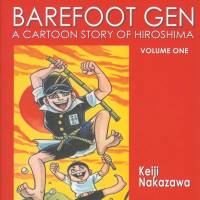With the recent announcement by North Korean authorities that they had successfully tested a hydrogen bomb, Keiji Nakazawa's classic anti-nuclear manga, "Barefoot Gen," once again deserves a full reading — both for newcomers or for those revisiting its brilliance.
Barefoot Gen, by Keiji Nakazawa.
10 volumes
Last Gasp, Manga.
Nakazawa vividly records how communities will both unite and divide during war and its aftermath, and he left a legacy as poignant and potent now — with Syria's starving cities and fear-mongering in Europe and America — as it was in the aftermath of World War II.
Beginning in the final months leading up to the bombing of Hiroshima on Aug. 6, 1945, and ending in 1953, "Barefoot Gen" takes us inside war from the civilians' view with none of the propaganda and all of the flawed and frabjous potential of humanity. There's discrimination and greed, compassion and sacrifice; drunken fathers resisting war and traumatized children seeking to grow strong "like wheat," as people of all nationalities struggle to survive in horrific conditions — one memorable character is a kind Korean, sharing food while facing prejudice.
Loosely autobiographical, the 10-part tale ends with Gen, now a talented artist and sign painter, moving to Tokyo to pursue work as an artist. Last Gasp Books published a new English translation of all 10 volumes between 2004 and 2010, with an introduction by the modern graphic novelist Art Spiegelman. Today, it's a timely reminder to give peace a chance.
Read archived reviews of Japanese classics at jtimes.jp/essential.



















With your current subscription plan you can comment on stories. However, before writing your first comment, please create a display name in the Profile section of your subscriber account page.